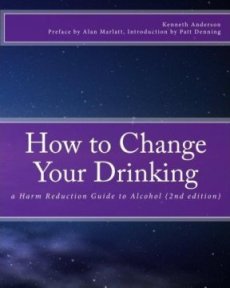While it works for some people, abstinence is not an effective approach for everyone. So why do the majority of drug and alcohol recovery programs promote abstinence as the only acceptable outcome? What about approaches that support anyone who is looking to make a positive change in their habits, no matter how small?
While working in needle exchange programs, I was struck by how these initiatives met people where they were at and respected the autonomy of the individual. These notions formed the basis of the HAMS Harm Reduction Network.
HAMS (Harm reduction, alcohol Abstinence and Moderation Support) is a free-of-charge, lay-led support and informational group for people who wish to make any positive change in their drinking habits, ranging from safer drinking to reduced drinking to quitting alcohol altogether. This means it does not matter how much you drink or how little you drink; all that is required is that you are contemplating making a change for the better. If you decide that you want to stop drinking and driving but still want to get drunk every day, you are welcome at HAMS. If you have only one drink per day, but want to go to none, you are welcome at HAMS. We even offer a supportive environment for ex-AAs who have chosen to experiment with moderation, because we believe it is safer for a person to try drinking again with information and support than to try and do it on one’s own.
Individuals are always encouraged to choose their own goals and are supported in these goals. Goals are never assigned to individuals by the organization or other members. In fact, HAMS members avoid giving advice unless it is directly solicited; we find it for more useful to share our experiences and what has worked for us rather than to tell others what they ought to do. There is no sponsorship in HAMS and there are no “old timers;” however, members will often partner up to be “abs buddies” who will choose to do a period of abstinence from alcohol, such as a week or a month. Members also partner up to be “mods buddies” and set moderate drinking goals to share together. Often half a dozen people may be buddying up at a time, each choosing a different abstinence or moderation goal.
Another feature of HAMS is that it offers both in-person meetings and online support via an email support group and a real time chat. While some attend the live meetings, many members express a preference for online support over live meetings both for reasons of convenience and of confidentiality. Our online group has around 1,200 members, although group membership is not required to participate. Around 8,000 people have purchased the HAMS book, How to Change Your Drinking: a Harm Reduction Guide to Alcohol. This means it is likely that many people are using the book on their own without participating in a group.
HAMS owes a great debt of gratitude to all the harm reductionists who have gone before us. By offering a welcoming environment that respects a person’s chosen goals, HAMS aims to reduce alcohol-related harm and potentially save lives.
Author: Kenneth Anderson, Executive Director, HAMS: Harm Reduction for Alcohol
*Please note that the material presented here does not necessarily imply endorsement or agreement by individuals at the Centre for Addictions Research of BC



